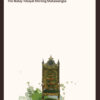In the Center of Authority: The Malay Hikayat Merong Mahawangsa offers a close reading of the Hikayat Merong Mahawangsa, arguing that different centers of authority and culture give meaning to a fragment of Malay tradition. The author further asserts that certain centers of authority and cultural forms predominate. The work illustrates the predominance of cultural hegemony. This hegemony is shown to be articulated through the ‘Malayistics voice,’ as represented by figures like James Low and Richard O. Winstedt, and perpetuated through the mechanisms of literacy and print. This influence prevailed among the newly emerged Malay elite and literati up to the early 20th century. The book also examines the rhetoric of Orientalism, which it describes as a privileged voice of representation and a stubborn cultural strain. Drawing on Edward Said’s ideas, the book discusses the relationship between the Occident and the Orient in terms of power, domination, and complex forms of hegemony.
The book emphasizes that the Hikayat Merong Mahawangsa is both history and literature, highlighting its ambiguity and oscillation between referentiality and non-referentiality. Maier argues that priority should be given to the non-referential, or literary quality, and suggests describing the text in rhetorical terms is more rewarding. Moreover, the author posits that Orientalist discourse fails to grasp the context in which such literature was produced and sustained: the Malay tradition itself. Alienation from this tradition, a consequence of English literacy and exposure to British writings, caused Malay literati to reject traditional texts as irrelevant.
For Malays themselves, this heritage has also become a dormant corpus to which only a small number of scholars and hobbyists are truly attracted. This dormancy has created uneasiness among Malays who, in their search for a National Identity for Malaysia, are making efforts to revive the new state’s interest in it—so far largely in vain. How can the beauty of the Hikayat Seri Rama and the elegance of the Hikayat Inderaputera be revealed to modern Malaysians? And what about so-called historical texts such as the Hikayat Merong Mahawangsa: do they refer to reality and, if so, to what degree? Where does referentiality end and figurality begin? How can we make nineteenth-century Malay culture and thought more understandable? Why read the Hikayat Merong Mahawangsa at all if it does not enrich our own experience of life?

